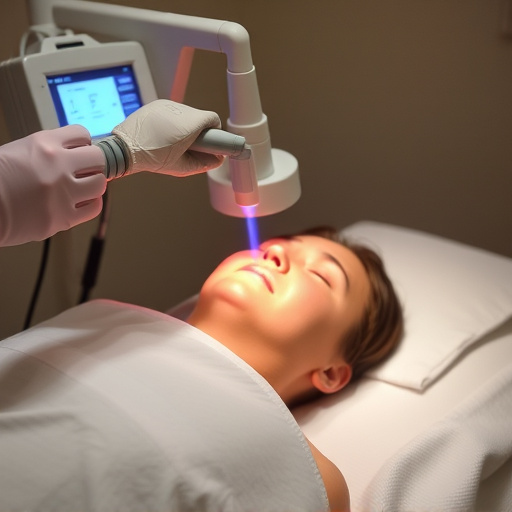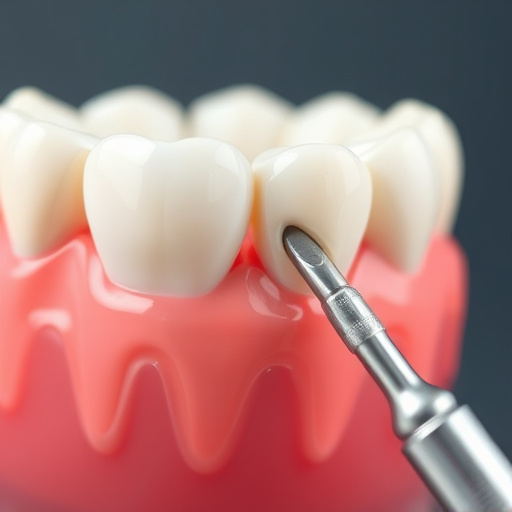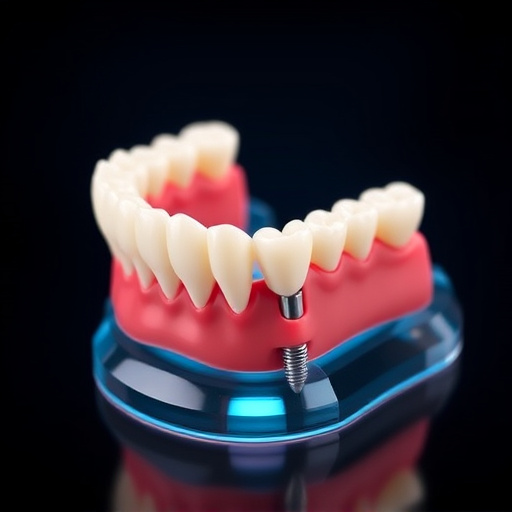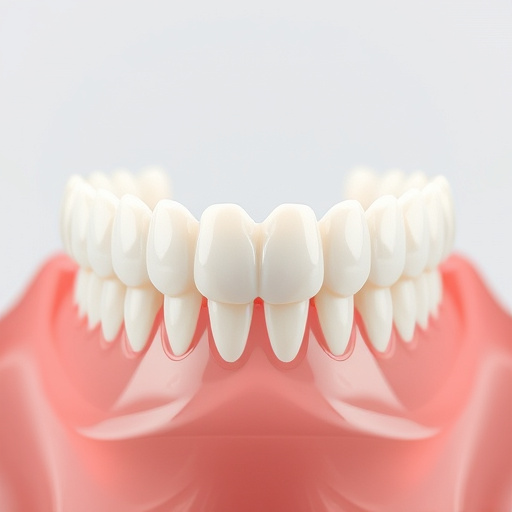Gum disease, caused by plaque and bacteria buildup, leads to inflammation and potential infection. Risk factors include poor oral hygiene, medical conditions, hormonal changes, smoking, and genetics. Untreated inflammation progresses to periodontitis, causing bone loss and tooth damage. Early gum disease treatment, including professional cleaning and restorative procedures, can reverse effects and prevent further harm. Effective treatments focus on plaque buildup and bacterial infections, facilitating recovery and restoring oral health. Preventive dentistry, regular check-ups, and good hygiene practices manage and avoid recurrences. Effective treatment offers lasting benefits, preventing severe complications like tooth loss and bone damage, while cosmetic procedures enhance aesthetics and confidence.
Gum disease, a common oral health issue, can lead to inflammation and potential tissue loss. Understanding its causes is key to prevention. This article delves into the root factors, including bacterial buildup and lifestyle choices. We explore the critical role of timely treatment, highlighting how it promotes healing and reduces long-term complications. Effective gum disease treatment not only restores oral health but also prevents systemic issues. Discover practical steps towards a healthier smile and learn why seeking prompt attention is essential for optimal outcomes.
- Understanding Gum Disease Causes
- The Role of Treatment in Recovery
- Long-Term Effects of Effective Treatment
Understanding Gum Disease Causes

Gum disease is a common oral health issue that affects millions worldwide. Understanding its causes is the first step in preventing and managing it effectively. The primary culprits behind gum disease are plaque and bacteria, which thrive in the mouth and can lead to inflammation and infection if left unchecked. Plaque, a sticky film of food particles and microorganisms, constantly forms on our teeth and gums. If not removed through proper brushing and flossing routines, it hardens into tartar (calculus), irritating the gum line and causing redness, swelling, and bleeding.
Various factors can increase an individual’s risk of developing gum disease, including poor oral hygiene, certain medical conditions like diabetes, hormonal changes, smoking, and genetic predisposition. Over time, untreated gum inflammation can progress to periodontitis, a more severe form that impacts not just the gums but also the bones supporting the teeth (periodontal bone loss). This can result in loose teeth, deep pockets between teeth and gums, and even tooth loss. Fortunately, prompt recognition and intervention through gum disease treatment, which may include professional cleaning, cosmetic fillings, or restorative dentistry procedures, can help reverse these effects and prevent further damage.
The Role of Treatment in Recovery

Effective gum disease treatment plays a pivotal role in facilitating recovery and restoring oral health. The primary goal is to address the underlying causes, such as plaque buildup and bacterial infections. Professional interventions like scaling and root planing help remove dental plaque and tartar from above and below the gumline, reducing inflammation and encouraging gum tissue regeneration. In severe cases, gum disease treatment might involve tooth extractions, particularly for impacted or infected wisdom teeth, to prevent further damage.
Preventive dentistry also plays a crucial part in managing and avoiding recurrences. Regular dental check-ups, including professional cleanings, enable early detection of gingival issues. Additionally, adopting good oral hygiene practices at home, such as daily brushing and flossing, significantly contributes to gum disease treatment and the overall maintenance of oral health.
Long-Term Effects of Effective Treatment

Effective gum disease treatment can have lasting benefits for your oral health. When left untreated, gum disease can lead to serious complications, including tooth loss and bone damage. Regular dental check-ups and proper oral hygiene practices are essential to prevent a recurrence after successful treatment. By addressing gum disease at its root cause—whether through deep cleaning, antimicrobial treatments, or in some cases, surgical procedures—dental professionals can significantly reduce the risk of long-term effects such as periodontitis, which is a more advanced form of gum disease.
Cosmetic fillings, dental crowns, and emergency dental care may be recommended as part of the treatment plan, depending on the severity of the disease and any resulting damage to teeth or gums. These procedures not only restore oral health but also enhance overall aesthetics and confidence. Continued maintenance through regular brushing, flossing, and professional cleanings ensures that gum tissue remains healthy, reducing the need for future interventions and promoting a vibrant, healthy smile.
Gum disease, caused by bacterial infections and poor oral hygiene, can lead to severe dental issues. Understanding its causes is the first step towards prevention. Prompt recognition and appropriate treatment, including professional cleaning and enhanced oral care routines, are key to recovery. Effective gum disease treatment not only relieves symptoms but also prevents long-term complications, such as tooth loss and bone damage, ensuring a healthier smile for years to come.














